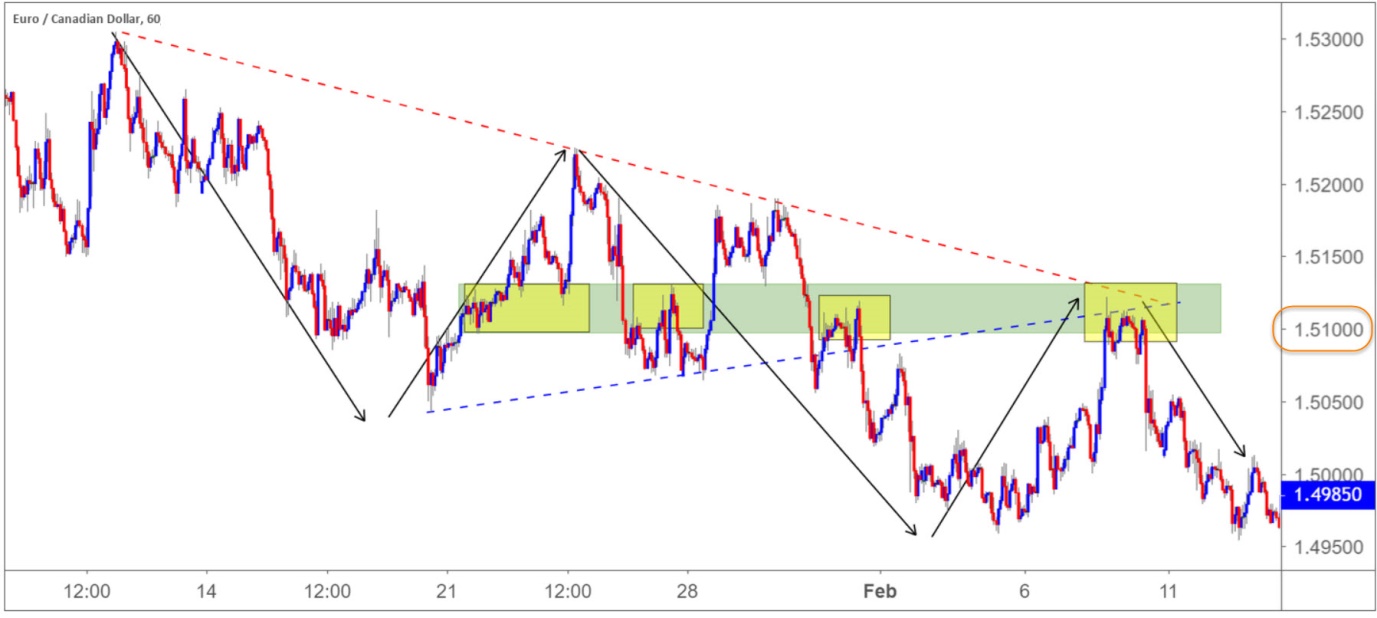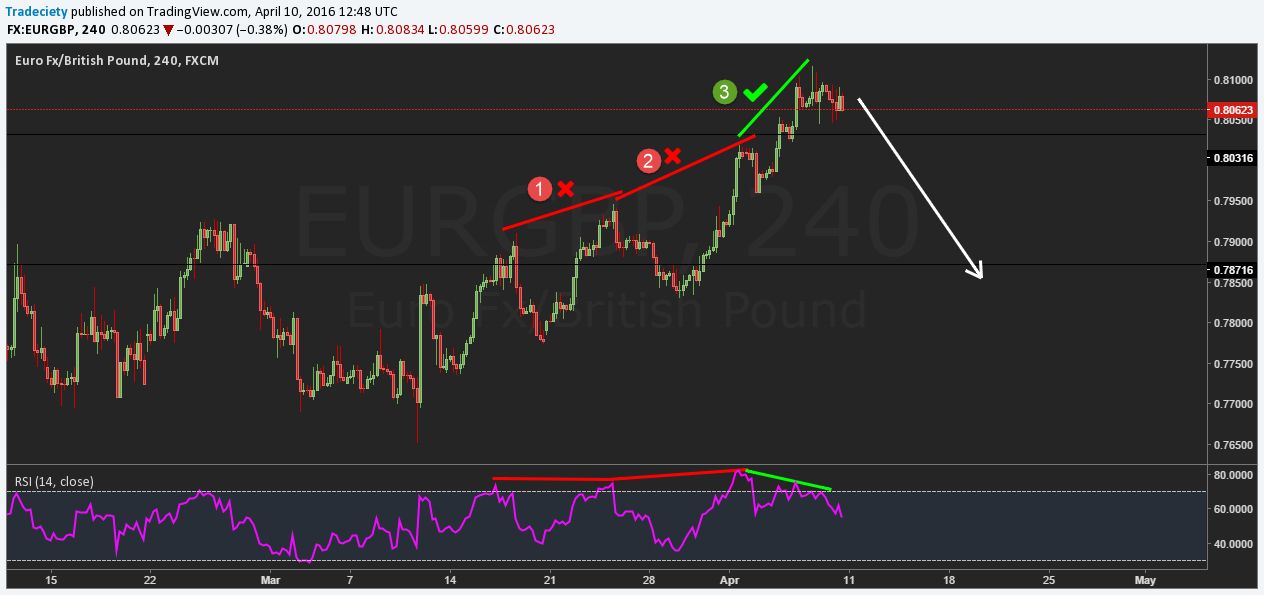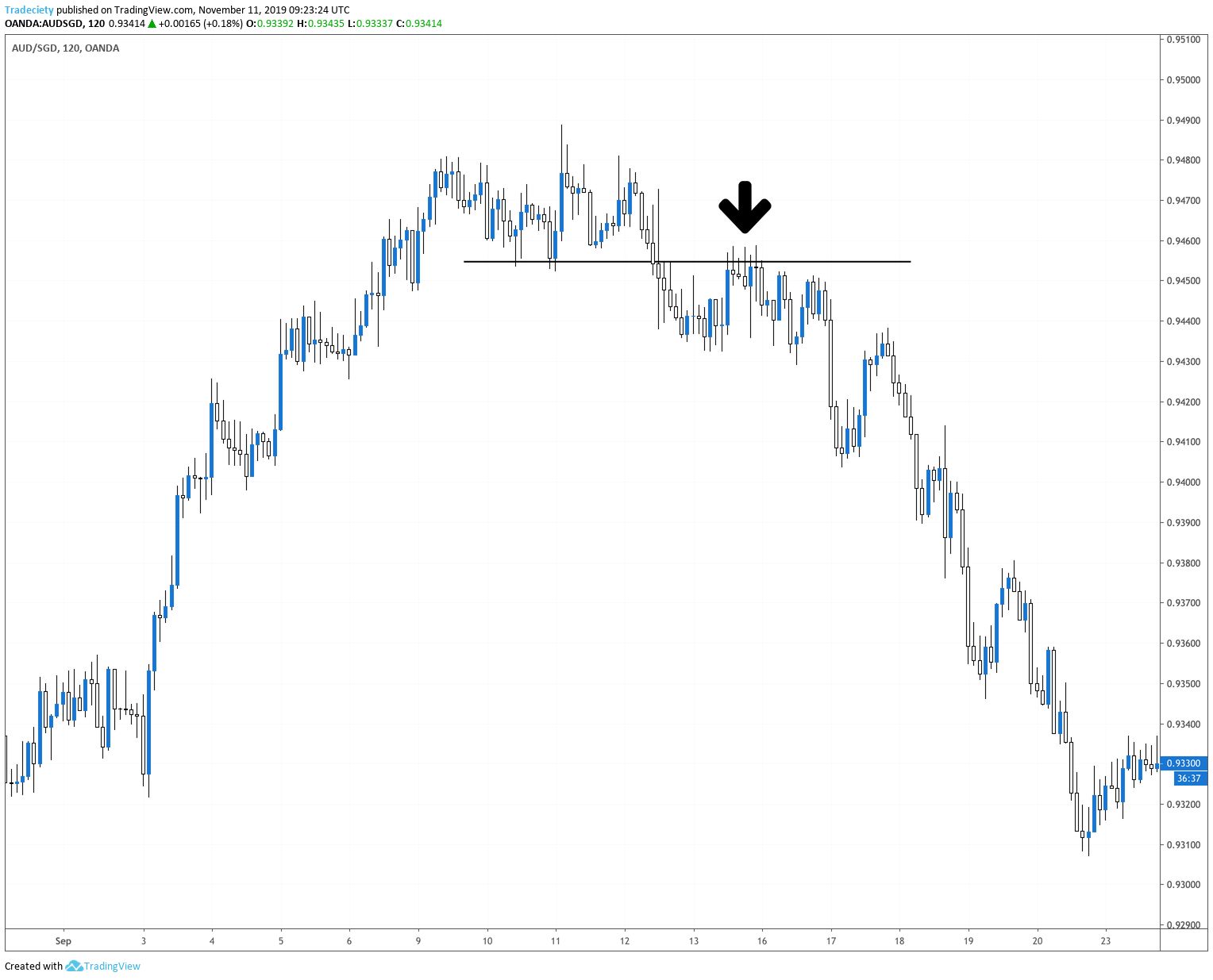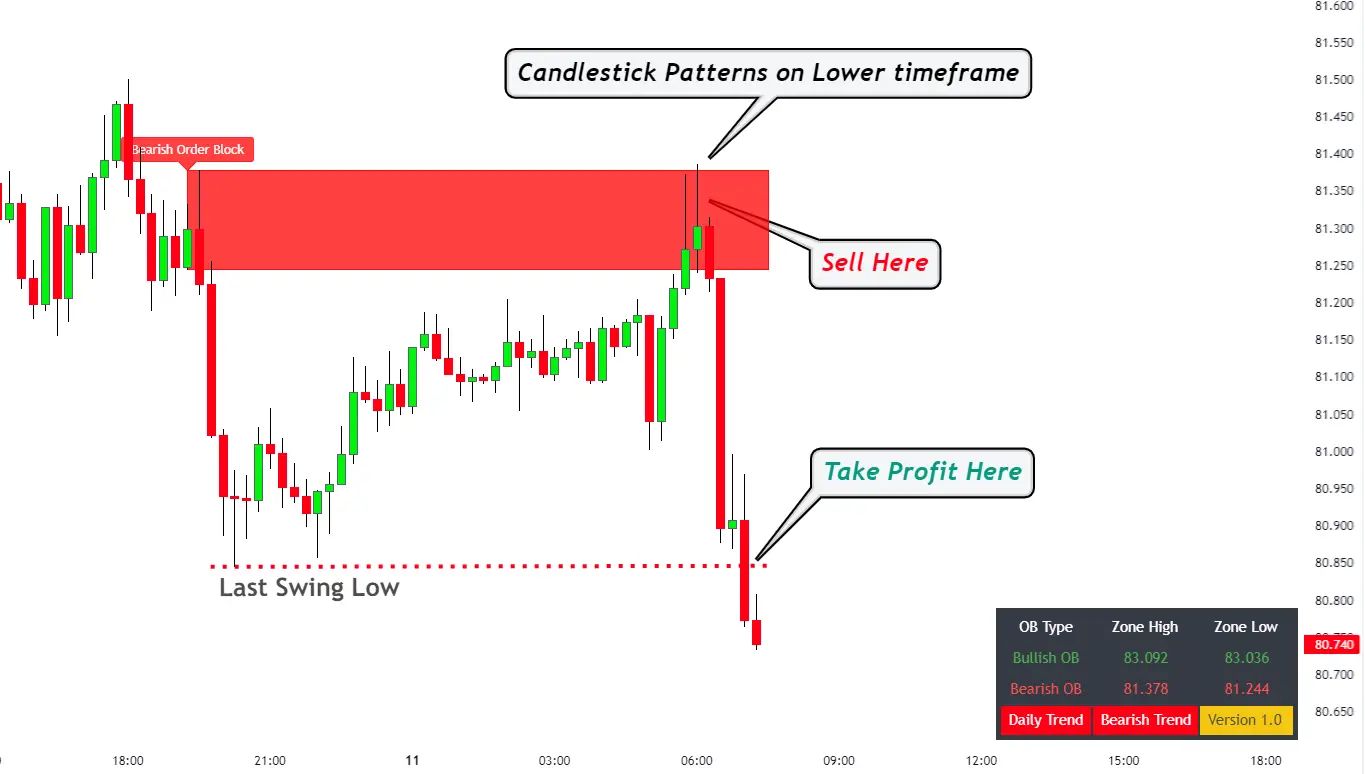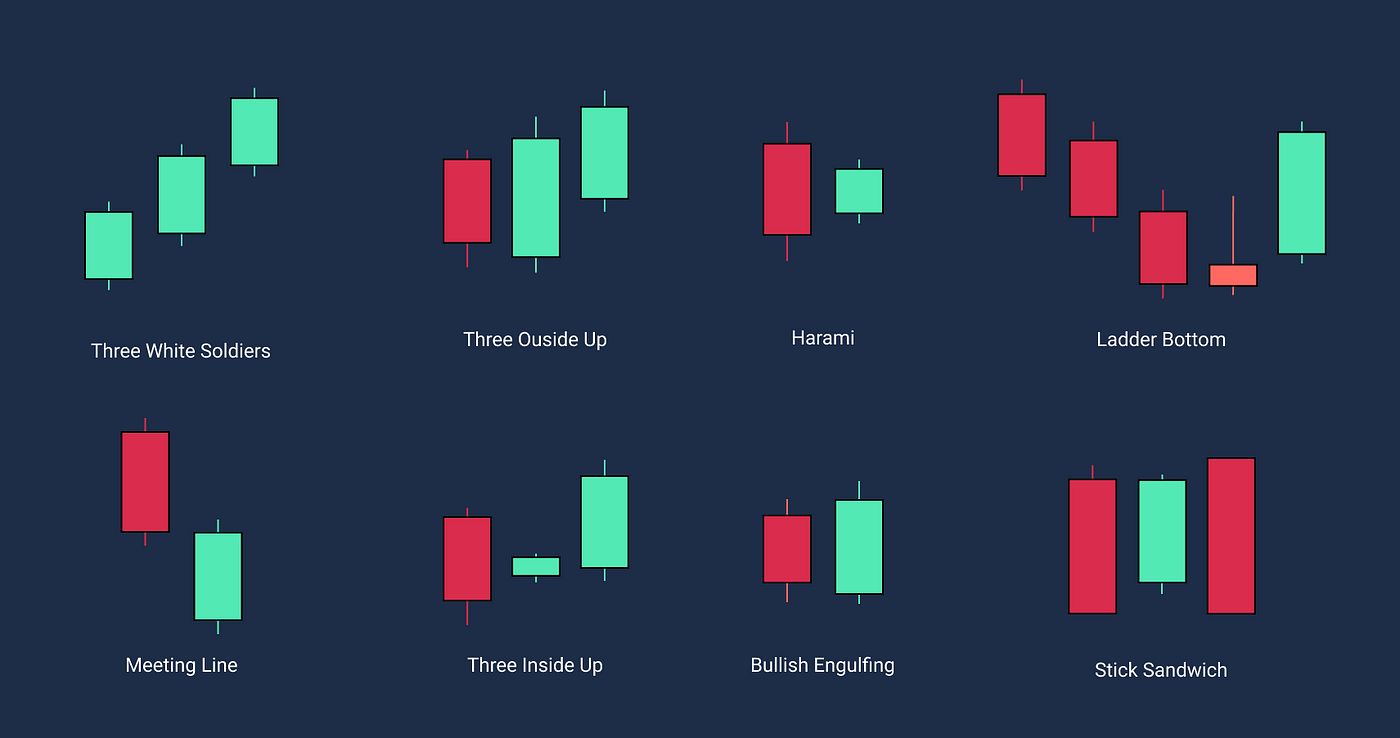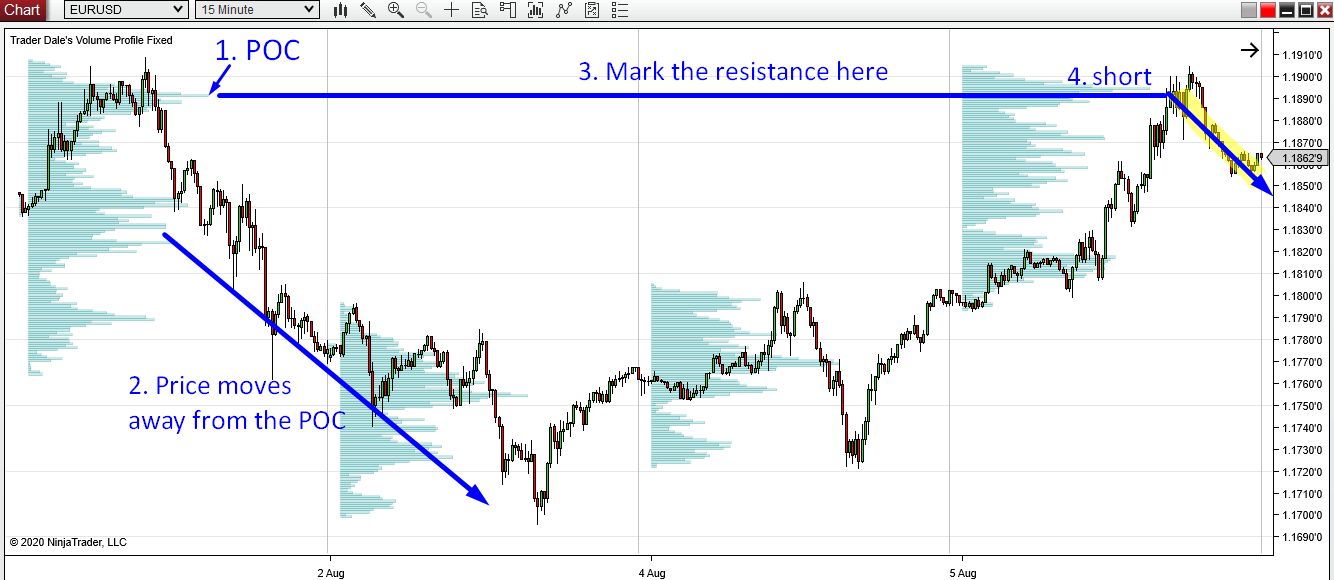Introduction
Trading in the financial markets can be challenging and unpredictable. Traders are constantly seeking ways to improve their chances of making profitable trades. One approach that has gained popularity among traders is using confluence in their trading decisions.
Confluence, in the context of trading, refers to the coming together of multiple factors or signals that reinforce a trading decision. These factors can include technical analysis indicators, fundamental analysis data, and psychological factors. When multiple factors align, they provide traders with greater confidence in their trading decisions.
Confluence is an essential concept in trading, as it helps traders filter out noise and focus on higher probability trades. By considering multiple factors, traders can increase the accuracy of their predictions and reduce the risk of false signals.
Identifying confluence factors requires a comprehensive and multi-dimensional analysis of the market. Traders need to consider both the quantitative data provided by technical and fundamental analysis, as well as the qualitative aspects such as market sentiment and psychological biases.
Mastering the art of analyzing confluence factors can take time and experience. However, the benefits are well worth the effort. Traders who effectively use confluence in their trading strategies have the potential to achieve consistent profitability and mitigate losses.
In this article, we will explore the importance of confluence in trading, how to identify confluence factors, and the benefits of incorporating confluence into your trading strategy.
What is Confluence?
Confluence in trading refers to the convergence or combination of multiple factors or signals that provide confirmation or agreement on a trading decision. It involves the analysis of various types of information, including technical analysis indicators, fundamental analysis data, and psychological factors, to identify high-probability trading opportunities.
Confluence can be thought of as a validation process. Instead of relying on a single indicator or piece of information, traders look for multiple, unrelated factors that align and support their trading bias. When these different factors confirm each other, it increases the trader’s confidence in the validity of the trade setup.
For example, let’s say a trader uses both trendline analysis and candlestick patterns to identify potential reversals in the market. If the trendline shows a significant level of support or resistance at a specific price level, and at the same time, a reversal candlestick pattern forms at that level, it creates a confluence of signals. This confluence suggests a higher likelihood of a price reversal, making it a stronger trade setup.
Confluence can also involve factors from different types of analysis. For instance, a trader may combine technical indicators like moving averages or Fibonacci retracement levels with fundamental analysis information, such as economic news releases or company earnings reports. When these technical and fundamental factors align, it creates a stronger case for a particular trading decision.
The concept of confluence extends beyond just technical and fundamental analysis. Psychological factors, such as market sentiment, can also play a role in identifying confluence. If market sentiment is overly bullish or bearish and aligns with other technical or fundamental factors, it can provide further confirmation for a trade.
Overall, confluence acts as a filtering mechanism in trading. By requiring multiple factors to align, traders can avoid impulsive trades based on single indicators or biased information. It increases the probability of successful trades and reduces the risk of false signals, ultimately improving overall trading performance.
Importance of Confluence in Trading
Confluence plays a crucial role in trading as it provides traders with a higher level of confidence in their trading decisions. Here are some key reasons why confluence is important:
1. Increased Probability of Success: When multiple factors align and confirm a trading decision, it significantly increases the probability of a successful trade. Confluence acts as a powerful filter, weeding out trades that lack sufficient supporting evidence and focusing on those with a higher chance of success.
2. Confirmation of Patterns and Trends: Confluence helps confirm patterns and trends in the market. By combining different technical analysis indicators, traders can validate their observations and identify stronger trade setups. This confirmation minimizes the risk of false signals and enhances the accuracy of trend analysis.
3. Reduced Subjectivity and Bias: Trading decisions backed by confluence factors are less subjective and prone to bias. Instead of relying on individual judgments or personal opinions, traders can base their decisions on objective evidence. This increases consistency in decision-making and minimizes emotional biases that can lead to poor trading outcomes.
4. Improved Risk Management: Confluence allows traders to have a better understanding of the risk-reward ratio of their trades. By considering multiple factors, including support and resistance levels, trend direction, and fundamental analysis, traders can assess potential profit targets and stop-loss levels more accurately. This leads to better risk management and helps traders protect their capital.
5. Adaptability to Changing Market Conditions: Market conditions are dynamic and can change rapidly. Confluence provides traders with the flexibility to adapt to different market scenarios. By analyzing various factors, traders can identify trade opportunities that are more likely to succeed in specific market environments, whether it is trending, ranging, or volatile.
6. Confidence in Decision-Making: Perhaps one of the most significant benefits of trading with confluence is the boost in confidence it provides. When multiple factors align, traders have greater conviction in their trades, which helps them stick to their trading plan and avoid impulsive decisions. This confidence can positively impact a trader’s mental state and overall performance.
In summary, confluence is vital in trading as it increases the probability of success, confirms patterns and trends, reduces subjectivity and bias, improves risk management, allows adaptability to changing market conditions, and boosts confidence. Incorporating confluence analysis into your trading strategy can help you make more informed and profitable trading decisions.
Identifying Confluence Factors
Identifying confluence factors involves a thorough analysis of various types of data and indicators. Here are the key steps to consider when identifying confluence factors:
1. Determine the Trading Approach: Before identifying confluence factors, it’s essential to determine the trading approach or strategy to be used. Are you a technical trader, fundamental trader, or a combination of both? Understanding your preferred approach will guide your analysis and selection of relevant confluence factors.
2. Analyze Technical Indicators: Technical indicators provide insights into price patterns, trends, and potential areas of support and resistance. Identify multiple technical indicators that align with your trading strategy. These can include moving averages, trendlines, Fibonacci retracement levels, oscillators, or any other indicators that help identify key market dynamics.
3. Consider Fundamental Analysis: Fundamental analysis involves evaluating economic data, company financials, news releases, and other factors that can impact the market. Identify relevant fundamental analysis factors that align with your trading strategy. These can include economic indicators, earnings reports, geopolitical events, or industry-specific news.
4. Evaluate Market Sentiment: Market sentiment refers to the overall feelings and attitudes of traders and investors towards a particular market. Analyze market sentiment indicators, such as investor surveys or sentiment indexes, to determine the overall market bias. Consider how market sentiment aligns with your other confluence factors to strengthen your trading decisions.
5. Review Psychological Factors: Psychological factors play a significant role in trading decisions. Consider common psychological biases, such as fear, greed, and herd mentality, and how they may impact your chosen confluence factors. Understanding and accounting for these biases can provide valuable insights into potential market behavior.
6. Look for Confirmation: When identifying confluence factors, it’s important to look for confirmation from multiple sources. Evaluate how various technical, fundamental, and psychological factors align and support or confirm each other. The more confirmation you have, the stronger the confluence and the higher the probability of a successful trade.
7. Consider Timeframes: Different timeframes can provide different confluence factors. Consider analyzing multiple timeframes to gain a holistic view of the market. For example, if you see a confluence of factors on the daily and weekly charts, it may strengthen your conviction for a longer-term trade.
8. Test and Refine: Identifying confluence factors is an ongoing process of testing and refining. Keep track of your trades and assess how well your chosen confluence factors perform. Adjust and refine your approach as needed based on your analysis and real-world trading results.
By following these steps, traders can effectively identify confluence factors that provide stronger and more reliable trading signals. Incorporating a multi-dimensional analysis approach will enhance the accuracy of trading decisions and increase the probability of successful trades.
Technical Analysis Confluence Factors
Technical analysis confluence factors are indicators or patterns that align and provide confirmation of a trading decision based on price action and historical market data. These factors can help traders identify stronger trade setups and improve the accuracy of their predictions. Here are some key technical analysis confluence factors to consider:
1. Support and Resistance Levels: Support and resistance levels are horizontal price levels where the market has historically shown buying or selling pressure. When these levels coincide with other technical indicators or chart patterns, it strengthens the confluence. For example, if a key support level aligns with a trendline or a Fibonacci retracement level, it provides stronger confirmation of a potential reversal or continuation.
2. Trendlines and Channels: Trendlines help identify the direction and strength of a trend. When trendlines align with other confluence factors such as horizontal support or resistance levels, it strengthens the validity of the trend. Traders can also use channels to identify potential breakouts or reversals when the upper or lower channel aligns with other indicators.
3. Candlestick Patterns: Candlestick patterns provide insights into market sentiment and potential reversals or continuations. When a candlestick pattern aligns with other technical indicators, such as a trendline or a key support/resistance level, it increases the significance of the pattern. For example, a bullish engulfing pattern forming at a strong support level adds confluence to a potential bullish reversal signal.
4. Moving Averages: Moving averages smooth out price data and help identify trend direction. When the price aligns with a moving average, it indicates a potential support or resistance level. For example, if a 200-day moving average aligns with a horizontal support level, it increases the confluence of that level, making it a stronger support zone.
5. Fibonacci Retracement Levels: Fibonacci retracement levels are used to identify potential areas of support or resistance based on the Fibonacci sequence. When these levels align with other confluence factors like trendlines or horizontal support/resistance levels, it increases the significance of the level. Traders often look for confluence between Fibonacci levels and other technical indicators to identify high-probability trading opportunities.
6. Volume and Price Patterns: Volume analysis can provide insights into market strength and confirm the validity of price patterns. When volume increases during a breakout or reversal and aligns with other technical factors, it adds confluence to the trade setup. Similarly, chart patterns, such as triangles or head and shoulders, gain more significance when they align with other technical indicators.
7. Oscillators and Indicators: Oscillators, such as the Relative Strength Index (RSI) or Stochastic Oscillator, help identify overbought or oversold conditions in the market. When these indicators align with other confluence factors, such as support or resistance levels, it increases the probability of a reversal or continuation. Traders often use multiple indicators and look for confluence among them to strengthen their trading decisions.
By considering these technical analysis confluence factors, traders can identify stronger trade setups and improve their chances of making profitable trades. It’s important to combine multiple factors and look for confirmation among them to increase the validity and reliability of your trading decisions.
Fundamental Analysis Confluence Factors
Fundamental analysis confluence factors refer to the combination of fundamental information and data that aligns to provide confirmation of a trading decision. Fundamental analysis involves evaluating economic indicators, company financials, news releases, and other factors that can impact the market. Here are some important fundamental analysis confluence factors to consider:
1. Economic Data and News Releases: Economic data, such as GDP figures, inflation rates, and employment reports, can have a significant impact on the overall market sentiment. When economic data aligns with the direction of a trade or with technical analysis indicators, it increases the confluence. For example, if the technical analysis indicates a bullish trend and a positive economic data release supports that trend, it adds confirmation to the trade setup.
2. Earnings Reports and Company News: Earnings reports and company news can greatly influence the price movements of individual stocks. When earnings reports align with the technical analysis of a stock, it strengthens the confluence of a trade setup. Positive earnings surprises or significant company developments that align with other factors can provide confirmation for a potential trade.
3. Industry-Specific News and Events: News and events specific to an industry or sector can affect the performance of related stocks. When industry-specific news aligns with the technical analysis of a stock within that sector, it adds confluence to the trade setup. For example, if a positive regulatory development aligns with a bullish technical pattern in a specific industry, it increases the probability of a successful trade.
4. Central Bank Decisions and Monetary Policy: Central bank decisions and monetary policy changes can have a significant impact on currency pairs and interest rate-sensitive assets. When central bank actions align with the technical analysis of a currency pair or interest rate instrument, it strengthens the confluence. For example, if a bullish technical setup aligns with a central bank signaling an interest rate hike, it adds confirmation to the trade setup.
5. Geopolitical Events and Market Sentiment: Geopolitical events, such as elections, trade wars, or geopolitical tensions, can create market volatility and impact sentiment. When geopolitical events align with other technical or fundamental factors, it adds confluence to the trade setup. Traders should consider the potential impact of significant geopolitical events on the market sentiment and align their trading decisions accordingly.
6. Monetary and Fiscal Policies: Government policies related to interest rates, taxes, or fiscal stimulus can impact the overall market sentiment. When monetary or fiscal policies align with other confluence factors, such as technical analysis or economic data, it strengthens the trading setup. Understanding the potential effects of government policies and their alignment with other factors is crucial in identifying trading opportunities.
7. Market Sentiment and Investor Sentiment Indicators: Market sentiment and investor sentiment indicators provide insights into the overall feelings and attitudes of traders and investors. When these sentiment indicators align with other fundamental or technical factors, it increases the confluence of the trade setup. For example, if a bullish technical pattern aligns with an overwhelmingly bullish investor sentiment, it adds confirmation to the trade.
By integrating fundamental analysis confluence factors into their trading decisions, traders can gain a more comprehensive understanding of the market and improve their trading accuracy. Properly evaluating fundamental data and aligning it with technical analysis can provide stronger confirmation for potential trade setups.
Psychological Confluence Factors
Psychological confluence factors refer to the influence of human psychology on trading decisions and how it can align with other factors to strengthen trade setups. The psychology of market participants can have a significant impact on the direction and momentum of the market. Understanding and incorporating psychological confluence factors can enhance trading decisions. Here are some key psychological factors to consider:
1. Market Sentiment and Crowd Psychology: Market sentiment reflects the overall attitude and mood of market participants. When market sentiment aligns with other technical or fundamental factors, it strengthens the confluence. For example, if a bullish technical setup aligns with a bullish market sentiment, it adds confirmation to the trade. Understanding the impact of crowd psychology and aligning it with other factors can provide valuable insights into market behavior.
2. Fear and Greed: Fear and greed are powerful emotions that drive market participants’ decisions. When fear or greed aligns with other technical or fundamental factors, it strengthens the confluence. For instance, if a technical analysis indicator signals an oversold condition, and there is widespread fear in the market, it increases the likelihood of a price reversal. Traders need to gauge the prevailing emotions and align them with other confluence factors to make more informed decisions.
3. Confirmation Bias: Confirmation bias is a cognitive bias where individuals tend to seek out information that confirms their existing beliefs and ignore contradictory evidence. Traders need to be aware of their own confirmation biases and actively seek out diverse perspectives and information. Aligning confirmation bias with other confluence factors can help reduce the risk of biases affecting trading decisions.
4. Herd Mentality: Herd mentality refers to the tendency of individuals to conform to the actions or opinions of a larger group. When herd mentality aligns with other technical or fundamental factors, it strengthens the confluence. For example, if a technical analysis indicator signals a trend reversal, and there is a significant number of traders following that trend, it increases the likelihood of a strong price movement. Identifying and aligning herd mentality with other factors can provide valuable insights into potential market moves.
5. Overconfidence and Hindsight Bias: Overconfidence and hindsight bias can lead traders to overestimate their abilities and make biased judgments based on past outcomes. It is important to remain aware of these biases and base trading decisions on objective analysis and multiple confluence factors. Combining techniques like backtesting and maintaining a trading journal can help manage overconfidence and avoid falling victim to hindsight bias.
6. Risk Appetite and Risk Aversion: Traders have varying degrees of risk appetite and risk aversion. Understanding your own risk tolerance and aligning it with other confluence factors can help determine trade sizing, stop-loss placement, and overall risk management. Furthermore, aligning risk appetite with other technical or fundamental factors can provide a more comprehensive view of the trade setup.
7. Emotional Discipline: Emotional discipline is the ability to control one’s emotions and stick to a trading plan. Aligning emotional discipline with other confluence factors can help reduce impulsive trading decisions and increase adherence to trading strategies. By aligning emotional discipline with technical and fundamental factors, traders can make more rational and objective trading decisions.
Incorporating psychological confluence factors into trading decisions can provide a deeper understanding of market dynamics. Recognizing the impact of psychological factors, aligning them with other technical and fundamental factors, and maintaining emotional discipline can contribute to more informed and successful trading outcomes.
Combining Confluence Factors
Combining confluence factors involves the integration of different types of analysis, such as technical, fundamental, and psychological, to strengthen trading decisions. By considering multiple factors that align and support each other, traders can increase the accuracy and confidence in their trade setups. Here are some key considerations when combining confluence factors:
1. Identify Multiple Factors: Start by identifying multiple factors from different types of analysis that are relevant to your trading strategy. These can include technical indicators, fundamental data, and psychological factors. The goal is to have multiple factors that align in supporting a particular trade setup.
2. Look for Confirmation: Seek confirmation among the identified factors. Look for points where multiple factors converge and provide confirmation of the trade setup. For example, if a technical indicator signals a reversal, and at the same time, there is positive fundamental news and bullish market sentiment, it strengthens the confluence of the trade signal.
3. Assign Weightage to Factors: Assign weightage to each factor based on its significance and reliability. Some factors may have more impact on the trade setup than others. Consider the strength of each factor and determine its influence on the final decision. This allows for a more balanced and informed approach when combining the factors.
4. Analyze Timeframes: Consider the alignment of confluence factors across different timeframes. Analyzing multiple timeframes can provide a more comprehensive view of the market and help identify higher probability trade setups. For example, if a technical indicator aligns on the daily, weekly, and monthly charts, it adds more weight to the confluence signal.
5. Evaluate Risk-Reward Ratio: Assess the risk-reward ratio of the trade based on the combined confluence factors. Consider the potential profit potential and the level of risk associated with the trade. Higher confluence factors may indicate a more favorable risk-reward ratio, increasing the probability of a successful trade.
6. Remain Flexible: Keep in mind that confluence factors are not static, and market conditions can change. Stay agile and adaptable in your analysis and decision-making process. Continuously monitor the alignment of confluence factors to identify potential shifts or new opportunities in the market.
7. Backtest and Refine: Backtesting is a valuable tool to test the effectiveness of combining confluence factors. Analyze historical data and assess the performance of trades based on the combined factors. Refine your approach based on the results and make adjustments as necessary to improve the accuracy and reliability of your trading decisions.
By effectively combining confluence factors, traders can increase the probability of successful trades. The integration of multiple technical, fundamental, and psychological factors provides a more comprehensive and holistic approach to trading decision-making.
Examples of Confluence in Trading
Confluence in trading can be observed in various market scenarios where multiple factors align to provide confirmation of a trading setup. Here are a few examples that illustrate the concept of confluence in trading:
1. Example 1 – Bullish Confluence: A trader identifies a bullish confluence setup in a stock. The technical analysis shows a bullish trendline breakout, with the stock price crossing above a key moving average. At the same time, the company reports better-than-expected earnings, which aligns with the positive market sentiment for that particular industry. These multiple factors provide strong confluence, indicating a high probability of further upside potential in the stock.
2. Example 2 – Bearish Confluence: In a currency pair, a trader observes a bearish confluence setup. The technical analysis reveals a bearish divergence between the price and a momentum oscillator, indicating a potential reversal. Additionally, there is negative fundamental news related to the country’s economic data, which aligns with a cautious market sentiment towards that currency. With these confluence factors aligning, the trader has increased confidence in their bearish outlook and may consider shorting the currency pair.
3. Example 3 – Reversal Confluence: Another scenario involves a reversal confluence setup in the commodities market. The technical analysis shows that a commodity price has reached a significant long-term resistance level. At the same time, there is a bearish divergence between the price and a volume indicator, suggesting decreased buying pressure. Additionally, fundamental analysis reveals negative supply and demand dynamics for the commodity. These multiple confluence factors align to indicate a potential reversal, prompting traders to consider short positions in the commodity.
4. Example 4 – Breakout Confluence: In the stock market, a trader identifies a breakout confluence setup. The technical analysis indicates that a stock price has been consolidating within a narrowing range, forming a triangle pattern. As the price approaches the apex of the triangle, there is a surge in volume, signaling increased interest from market participants. Simultaneously, there is positive news related to the company’s product launch. These confluence factors align to suggest a potential breakout, prompting traders to consider long positions in the stock.
5. Example 5 – Trend Confirmation Confluence: In the forex market, a trader seeks confirmation of a trending market. The technical analysis reveals a currency pair exhibiting a strong uptrend, with the price consistently above a rising 200-day moving average. Additionally, the fundamental analysis indicates that the country’s economy is experiencing robust growth, supported by positive GDP data. These confluence factors align to confirm the uptrend, providing traders with confidence to ride the trend and potentially capitalize on further upside potential.
These examples demonstrate how confluence factors can work together to strengthen a trading setup. By identifying and assessing multiple factors across technical, fundamental, and psychological domains, traders can increase their confidence and make more informed trading decisions.
Benefits of Trading with Confluence
Trading with confluence offers several key benefits that can significantly improve the success rate and overall performance of traders. Here are some of the key benefits of incorporating confluence into your trading strategy:
1. Increased Confidence: Trading with confluence factors provides a higher level of confidence in your trading decisions. When multiple factors align, it reinforces the validity of a trade setup and reduces uncertainty. This increased confidence can help traders stay focused and disciplined during trades, leading to better trading outcomes.
2. Improved Accuracy: Confluence helps improve the accuracy of trading decisions. By analyzing and aligning multiple factors, it filters out false signals and increases the probability of successful trades. When technical, fundamental, and psychological factors all align, it provides a more comprehensive and robust analysis, resulting in more accurate trade entries and exits.
3. Enhanced Risk Management: Trading with confluence allows for better risk management. By considering multiple factors, traders can assess the potential risk-reward profile of trades more effectively. It helps in determining suitable stop-loss levels, profit targets, and position sizing. This systematic approach to managing risk reduces the possibility of substantial losses and protects trading capital.
4. Greater Trade Selection: Confluence helps traders select higher quality trade setups. By requiring multiple factors to align, it filters out low-probability trades and focuses on those with a higher likelihood of success. This selective approach can lead to more profitable trades and better overall trading performance.
5. Reduced Emotional Bias: Trading with confluence factors helps reduce emotional bias in trading decisions. Instead of relying solely on subjective opinions or single indicators, traders base their decisions on objective evidence from multiple sources. This objective approach minimizes the influence of emotions, such as fear and greed, leading to more rational and disciplined trading behavior.
6. Flexibility and Adaptability: Confluence analysis allows traders to be flexible and adaptable to changing market conditions. By considering different types of factors, traders can identify trade setups suitable for different market environments, such as trending, ranging, or volatile markets. This adaptability enhances the overall resilience of a trading strategy.
7. Consistent Trading Performance: Incorporating confluence factors into a trading strategy promotes consistency in trading performance. By following a systematic approach that combines various types of analysis, traders can develop a reliable and repeatable process. This consistency contributes to smoother equity curves and long-term profitability.
8. Enhancing Trading Skills: Trading with confluence factors helps traders develop and refine their trading skills. Analyzing multiple factors and observing how they align or diverge provides valuable insights into market dynamics, improving market understanding and decision-making abilities. As traders gain experience in identifying confluence factors, they become more proficient in analyzing market conditions and making well-informed trading decisions.
Overall, trading with confluence factors provides numerous benefits, including increased confidence, improved accuracy, enhanced risk management, reduced emotional bias, adaptability to market conditions, consistent performance, and skill development. By incorporating confluence analysis into your trading strategy, you can increase your chances of success and build a solid foundation for long-term profitability.
Conclusion
Confluence plays a vital role in trading, providing traders with a powerful tool to increase the accuracy and success rate of their trades. By incorporating multiple factors from technical analysis, fundamental analysis, and psychological analysis, traders can strengthen their trading decisions and make more informed choices.
Through the concept of confluence, traders can filter out noise and focus on trades that have a higher probability of success. By aligning various factors such as support and resistance levels, trendlines, candlestick patterns, economic data, market sentiment, and psychological biases, traders can identify stronger trade setups and improve their timing.
Trading with confluence offers several benefits, including increased confidence in decision-making, improved accuracy of trade entries and exits, enhanced risk management, and reduced emotional bias. Moreover, incorporating confluence factors allows traders to be more adaptable to changing market conditions and improves overall consistency in trading performance.
However, it is important to note that confluence analysis is not a foolproof method, and trading always carries risks. Proper analysis, risk management, and continuous evaluation of trading results are essential for success.
To effectively utilize confluence in trading, it is recommended to develop a systematic approach and continuously refine it through backtesting and evaluating real-world trading performance. Regularly reassessing and adjusting confluence factors based on changing market conditions is also critical to maintaining the effectiveness of the trading strategy.
By integrating confluence factors into your trading strategy, you can increase your ability to identify high-probability trades, minimize risks, and improve overall profitability. It is a continuous learning process that requires practice, discipline, and a willingness to adapt to the ever-changing market dynamics.
Remember, trading with confluence is about stacking the odds in your favor. By combining multiple factors, you can make more informed trading decisions and enhance your trading skills. Embrace the power of confluence and unleash its potential to drive your trading success.







